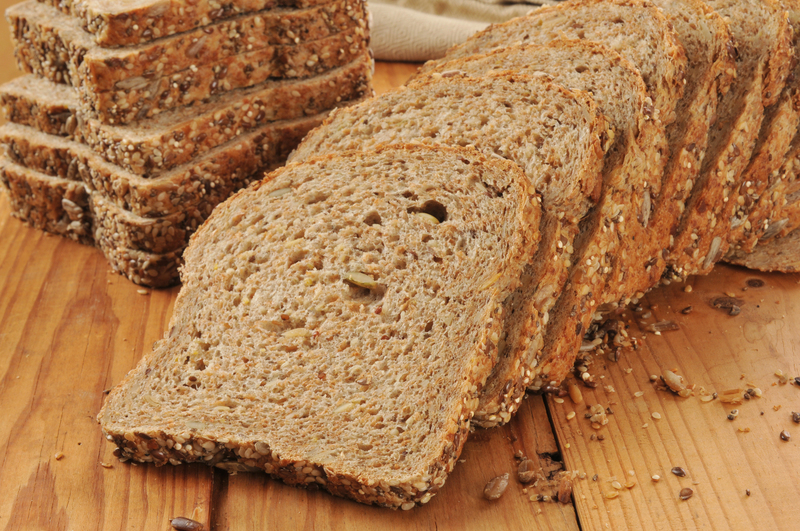Essential tips for maintaining pristine window sills free from mould
Posted on 26/08/2025
Essential Tips for Maintaining Pristine Window Sills Free from Mould
Maintaining spotless, mould-free window sills is vital for safeguarding your home's aesthetics and ensuring a healthy living environment. The presence of mould on window sills not only affects the appearance of your home but can also lead to respiratory problems and other health concerns. In this comprehensive guide, you'll find actionable tips and professional advice on how to keep your window sills immaculate, clean, and protected against mould growth.
Why Keeping Window Sills Free from Mould Matters
Mould thrives in moist, dark environments, making window sills--especially those that collect condensation--prime targets for unsightly and potentially hazardous growths. Not only does mould detract from the pristine appearance of your window areas, but it can also:
- Trigger allergies and respiratory issues
- Damage wooden or painted surfaces
- Spread quickly to other parts of the house
- Emit unpleasant odours
- Lessen your property value
Being proactive about cleaning and preventing mould will help ensure your window sills stay clean and your indoor environment remains healthy.

Understanding Mould on Window Sills
What Causes Mould to Grow on Window Sills?
Mould spores are present everywhere, but window sills offer a particularly attractive environment due to:
- Condensation from temperature differences between indoors and outdoors
- Poor ventilation leading to damp, stagnant air
- Leaky windows that allow rain or humidity inside
- Dust and debris accumulating on the sills, which provides nutrients for mould
Understanding how mould forms is the first step in keeping your window sills pristine and completely free of mould.
Identifying Signs of Mould on Window Sills
Early detection is crucial. Watch out for:
- Black, green, or white spots and streaks
- Musty, unpleasant odours
- Dampness or water stains around the sill
- Peeled or bubbled paint or wood rot
Regular inspections will help you catch issues before they escalate.
Preventative Measures: Keeping Your Window Sills Spotless and Mould-Free
1. Control Moisture and Humidity
- Ventilate your home: Open windows regularly or use exhaust fans, especially in kitchens and bathrooms, to displace humid air.
- Use a dehumidifier: In rooms prone to excess humidity, a dehumidifier keeps moisture levels in check, reducing the risk of mouldy window sills.
- Wipe condensation: Every morning, use an absorbent cloth or paper towel to wipe away moisture from window glass and sills.
2. Seal Windows Properly
- Inspect seals: Check window seals and caulking for cracks or gaps and repair them promptly to keep water out.
- Install weather stripping: This can provide an extra layer of protection against leaks and drafts.
3. Clean Window Sills Regularly
- Dust and wipe down: Make it a habit to dust your window sills weekly, using a microfiber cloth, and wipe with warm soapy water.
- Avoid harsh chemicals: Use mild detergents; harsh chemicals can damage paint or wood, making it easier for mould to take hold.
4. Keep Surroundings Clear
- Avoid clutter: Do not crowd window sills with objects, since they can trap moisture and restrict airflow.
5. Check for Leaks
- Inspect after storms: After heavy rainfall, check for seepage around windows and fix immediately to prevent mouldy build-up.
6. Use Mould-Resistant Paint or Sealant
- Apply special coatings: If repainting or renovating, opt for mould-resistant paint or sealants designed for damp-prone areas.
Effective Cleaning Techniques for Mould-Free Window Sills
1. Natural Cleaning Solutions
- Vinegar and Baking Soda: Mix equal parts white vinegar and water in a spray bottle. Spray generously on the mouldy area, let it sit for an hour, then scrub with a soft brush. For stubborn spots, sprinkle baking soda before scrubbing.
- Lemon Juice: Lemon juice's natural acidity makes it a great tool for killing mild mould, leaving your sills fresh and fragrant.
2. Commercial Mould Removers
- Choose safe, non-toxic cleaners: Surfaces like painted wood or stone need gentle yet effective solutions. Read labels and follow instructions.
- Wear gloves and ventilate: When using chemical products, protect yourself and your home by ensuring good airflow.
3. Routine Maintenance Tips
- Weekly Cleaning: Incorporate your window sill maintenance into your regular cleaning routine.
- Monthly Inspections: Check for early signs of mould, leaks, or condensation.
- Seasonal Deep Cleans: At the end of each season, deep clean your sills, paying close attention to corners and under the sashes.
4. What To Do If Mould Persists
If, despite all efforts, your window sills keep attracting mould, there may be a larger moisture issue at play.
- Check for hidden leaks: Sometimes, hidden leaks in the walls or frames allow water to accumulate.
- Increase ventilation: Install trickle vents or mechanical ventilation systems if needed.
- Consult a professional: Persistent mould may require assessment by a building or remediation expert.
Long-Term Strategies for Pristine, Mould-Free Window Sills
1. Upgrade To Double-Or Triple-Glazed Windows
Modern windows are less prone to condensation thanks to their improved insulation, keeping your window sills drier and cleaner with minimal effort.
2. Regularly Replace Weather Stripping and Seals
Even the best window maintains won't last forever. Make it a habit to check and change weatherproofing materials every few years to avoid future issues.
3. Consider Window Treatments
- Anti-condensation films: These products reduce water build-up on glass and, consequently, your window sill.
- Blinds and curtains with airflow: Use lightweight window treatments that don't trap moisture against the window frame and sill.

Frequently Asked Questions
How often should I clean my window sills to prevent mould?
It's best to clean your window sills weekly, with a deeper inspection and spot cleaning every month. Increase cleaning frequency during wet or humid seasons.
Can I use bleach to remove mould from window sills?
While bleach can kill mould, it may not be suitable for porous surfaces like wood. Natural cleaners (such as vinegar and baking soda) are often safer and just as effective.
Why do my window sills keep getting mould even after cleaning?
If mould recurs, there's likely a moisture issue (such as condensation or leaks) that needs addressing. Check window frames, improve ventilation, and consider professional help if needed.
Is mould on window sills dangerous?
Prolonged exposure to mould can cause allergic reactions and respiratory illnesses, especially among vulnerable individuals. Quick removal and prevention is essential.
Conclusion: Take Action for Spotless, Healthy Window Sills
With a blend of proactive maintenance, the right cleaning techniques, and a watchful eye for leaks and condensation, you can keep your window sills pristine and mould-free all year round. Remember:
- Control humidity and ventilation
- Clean and inspect window sills frequently
- Address leaks and reseal windows as needed
- Use safe, effective cleaning solutions for mould
- Invest in long-term upgrades, like better windows and protective coatings
Take these essential tips to heart, and you'll enjoy sparkling window sills--and a healthier home--for years to come.




